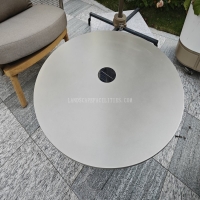Welcome to the website for landscape facilities products and knowledge.
How does WPC handle exposure to fertilizer runoff?
Wood-Plastic Composite (WPC) is a versatile and eco-friendly material widely used in construction and outdoor applications. One of its key advantages is its resilience against environmental pollutants, including fertilizer runoff. Unlike traditional wood, WPC does not absorb water or chemicals, preventing degradation and maintaining structural integrity.
When exposed to fertilizer runoff, WPC's non-porous surface resists chemical absorption, reducing the risk of damage. The plastic component in WPC acts as a barrier, shielding the material from harmful substances. Additionally, WPC's UV-resistant properties ensure long-term durability, even in areas with high agricultural activity.
To enhance performance, manufacturers often treat WPC with additives that further repel contaminants. This makes it an ideal choice for decks, fences, and other outdoor structures near fertilized landscapes. By choosing WPC, users contribute to sustainable practices while minimizing environmental impact.
In summary, WPC's innovative design and material composition provide an effective solution for managing exposure to fertilizer runoff, combining durability with environmental responsibility.
Related search:

Recommendation
Outdoor stainless steel table with solar-powered ambient lighting feature - excellent design.